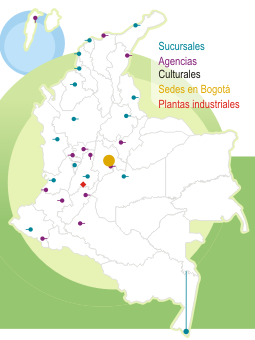Working Papers on Economics
Below are the contents available on the site related to the query.
- Publicación |El efecto del fenómeno El Niño sobre los precios minoristas corre a través de su efecto sobre los costos mayoristas, exclusivamente, y no a través de cambios en la estructura del mercado minorista.
- Publicación |Gran parte de la población carece de las herramientas fundamentales para tomar decisiones económicas y financieras adecuadas, lo cual es crucial para mejorar su bienestar y protegerse frente a choques económicos o inflacionarios.
- Publicación |Nuestros resultados muestran que la existencia de subsidios implícitos ocasiona que los individuos prefieran estar en el actual sistema privado mientras se cotiza, pero en el público para pensionarse.
- Publicación |Identifying the impact of physicians on health outcomes is a challenging task due to the nonrandom sorting between physicians, hospitals, and patients. We overcome this challenge by exploiting a Colombian government program that randomly assigned 2,126 physicians to 618 small hospitals.
- Publicación |Models with an occasionally binding credit constraint have been used to analyze financial crises and previous literature has highlighted that the specific form of this constraint is decisive for policymaking conclusions.
- Publicación |Abstract
This document presents projections on the fiscal expenditure associated with Colpensiones and the special regimes that make up Colombia's pension system under the rules in force in 2024. Under conventional assumptions about longevity, formality, and a long-run…
- Publicación |This document describes the Colombian healthcare system and its main responsibilities, highlighting the roles of insurance and financing, and compares it with other healthcare systems globally.
- Publicación |This paper empirically examines the effects of international remittances on local house prices. International remittances are one of the main drivers of capital inflows in emerging economies. We consider the salient case of Colombia.
- Publicación |Abstract
After a protracted period of financial deepening following a financial crisis at the end of the 20th century, the ratio of corporate bank loans to GDP in Colombia stagnated between 2016 and 2019. In this paper, we explore if firms have substituted bank loans…
- Publicación |Using monthly information on retail trade, we study the short-term dynamics of household consumption variations in Colombia. Based on a sample of retail trade excluding fuels and vehicles, we find that the growth of household consumption can be explained by lags in the Economy Monitoring Indicator…
- Publicación |We evaluate the effectiveness of consumer debt moratoria, one of the earliest policy interventions aimed at alleviating debt burdens. Using administrative data from Colombia, our study compares households that narrowly qualified for the moratorium (eligible up to 60 days overdue on their mortgages…
- Publicación |This paper examines the relationship between three government support measures (debt moratorium, credit guarantee programs, and payroll subsidies) and the firm’s payment behavior on loans in Colombia
- Publicación |Healthcare expenditure in Colombia is expected to increase by 35% over the next eight years, due to population aging, rising costs, and domestic policies. These trends, in a context of high levels of informality and affiliation to the subsidized regime, add significant pressure to public finances.
- Publicación |In Colombia, 50% of labor income is lower than the legal MW level. It is in this context that we analyze the effect of increasing MW on labor income distribution and its inequality, household income distribution and its inequality, and on monetary poverty prevalence.
- Publicación |Abstract
In this paper, we study the coexistence of cash and electronic payments introducing some distortions in the payments markets to understand the widespread use of cash, specially in emerging countries. Following Lagos and Wright (2005) we model explicitly …
- Publicación |This paper analyzes whether the policy of VAT exemption days, implemented in Colombia between 2020 and 2022 for some products and merchandise lines, had a positive effect on the consumption of such exempted goods.
- Publicación |This study examines the determinants of sovereign risk, focusing on the impact of geopolitical risk in emerging market economies (EMEs) sovereign risk metrics. Using local projection techniques, we evaluate the effects of geopolitical risk on credit default swaps (CDS) and EMBI indices in EMEs,…
- Publicación |Most macroeconomic labor literature on estimating matching functions does not consider spatial spillover effects. However, job search and vacancy-filling processes often involve neighboring locations, as local workers can search for and fill vacancies in nearby labor markets.
- Publicación |This paper evaluates seven output gap models for real-time estimates, based on three criteria: stability of estimations on new observations, data revisions and/or methodological changes; inflation forecasting accuracy; and potential output response to structural economic shocks.
- Publicación |Transparency is often emphasized as a key element for central bank independence and the effectiveness of monetary policy. Between 2018 and 2019, the Central Bank of Colombia (Banco de la República) undertook a significant overhaul of its monetary decision-making process, which led to significant…





















































